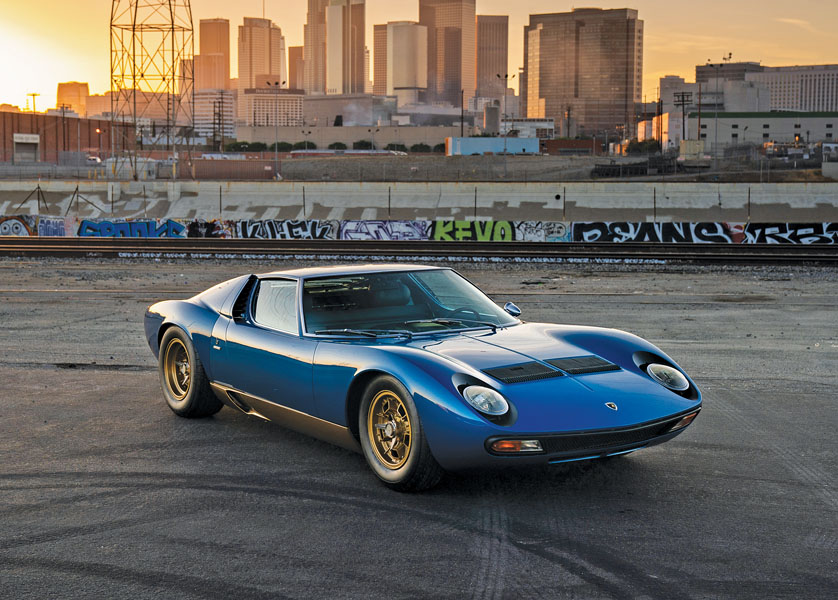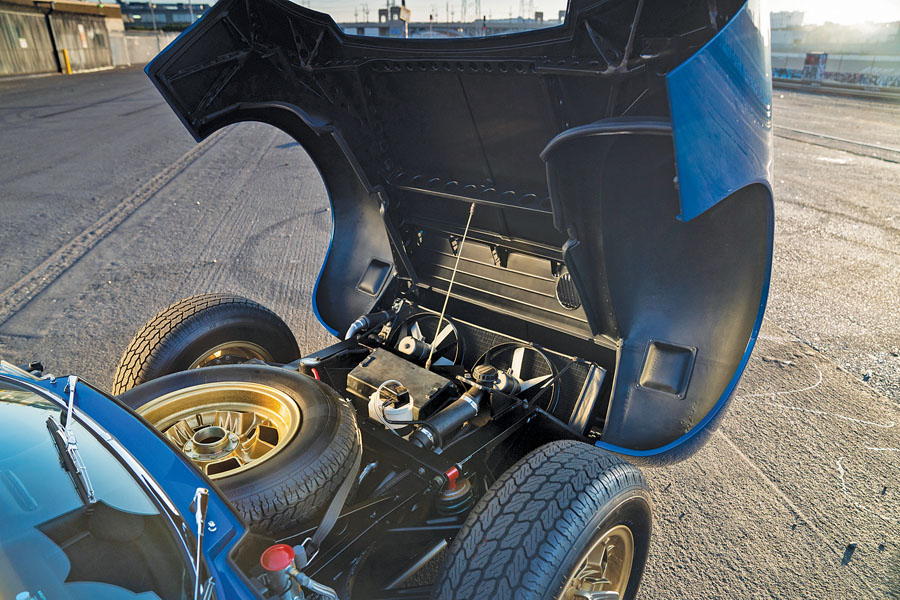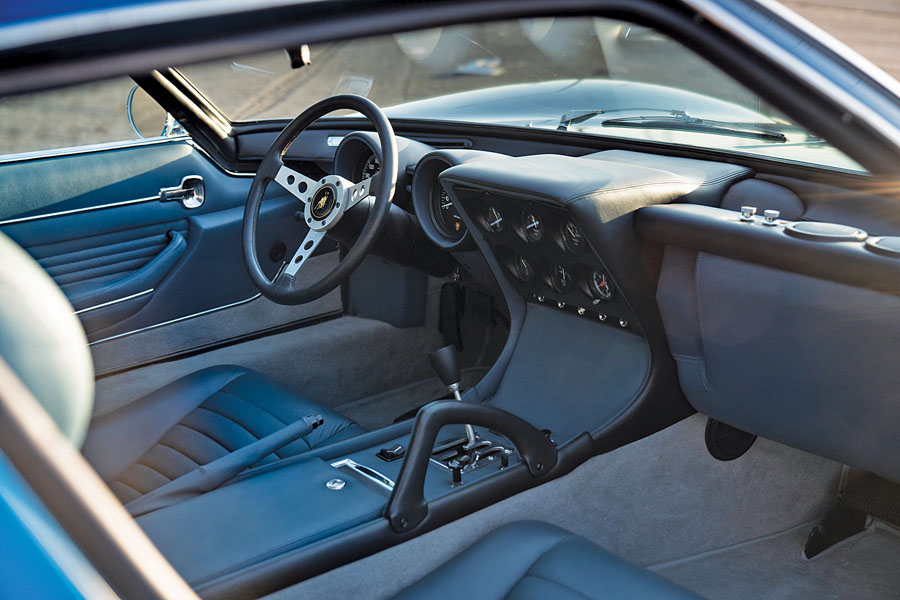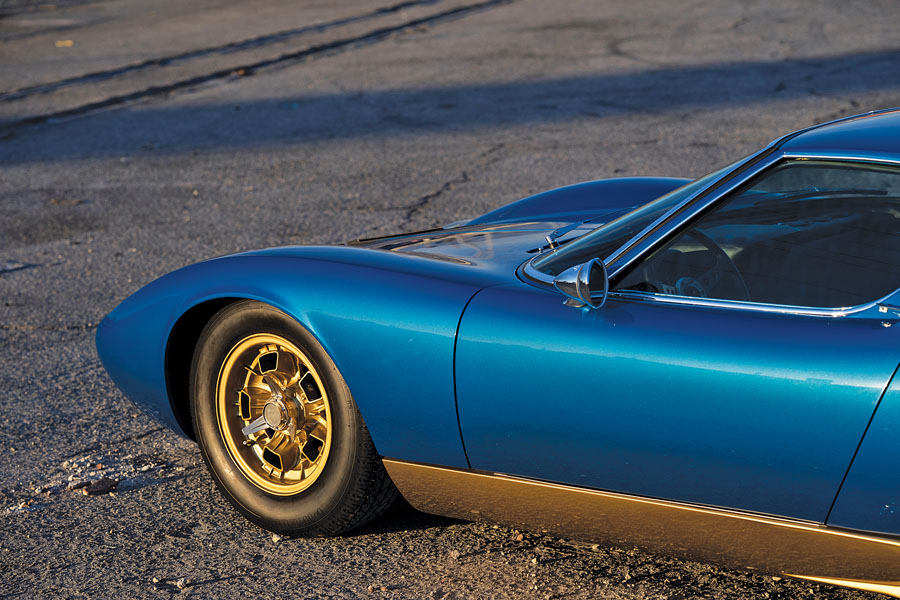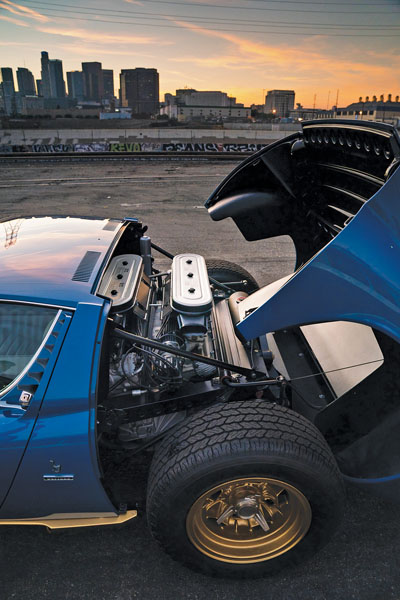SCM Analysis
Detailing
| Vehicle: | 1971 Lamborghini Miura P400 SV |
| Years Produced: | 1971–72 |
| Number Produced: | 148 |
| SCM Valuation: | $2,358,000 |
| Tune Up Cost: | $3k-plus |
| Chassis Number Location: | Front chassis cross-member |
| Engine Number Location: | In between heads, centered on block |
| Alternatives: | 1969–73 Ferrari 365 GTB/4 Daytona, 1974–78 Lamborghini LP400 Countach, 1969–71 Lamborghini Miura S |
| Investment Grade: | A |
This car, Lot 200, sold for $2,205,000, including buyer’s premium, at RM Sotheby’s Petersen Museum Sale in Los Angeles, CA, on December 8, 2018.
To a new generation of collectors, understanding the market is a numbers game. How much is it worth? How much will it be worth tomorrow? To help predict that, how many were made? And if it’s modern, how little has it been used?
The auction catalog tells us that this Miura SV is one of only 11 of this sub-variant made, of which five were delivered to the United States. It also suggests it’s the only one originally painted this color.
Lots of numbers to consider.
Fast, nimble and rare
Let’s start at the beginning. Most enthusiasts know the SV was the final Miura incarnation, and it addressed many of the model’s shortcomings.
The chassis is stiffer, the rear track and wheels are wider, the nose-down attitude makes it more stable at speed, and the factory claimed a few extra horses.
From an owner/driver’s perspective, it certainly feels more planted than earlier cars, especially around corners. In over 20 years and 40,000 km (24,854 miles) with mine, the backside has always behaved itself even on flat-out journeys. Any power increase is debatable, as it was easier to reprint a brochure than blueprint an engine.
Whatever the practical benefits, the market prizes the looks and rarity (148 made) of the SV, and it’s worth roughly double a P400 or S model.
Now for the details.
A less-valuable U.S.-spec car
The SV was the only Miura built under the U.S. government’s tough new safety and emissions regime. That meant cars headed stateside were built to a different spec — and it wasn’t one of the original designers’ choosing. The added rectangular sidelights, octagonal wheel nuts shorn of eared spinners, and environment-friendly exhaust did nothing to enhance power or aesthetics — just as Ferrari’s Daytona suffered the same emasculation.
Our subject car was originally U.S. spec, but subsequent owners have modified it to look like a Euro-spec SV, removing the sidelights, fitting a km/h speedometer, etc. Nobody ever does the opposite, as Euro-spec versions of most classics are more desirable than the U.S. market equivalent.
What the catalog doesn’t mention is that after the first 54 SVs, Lamborghini separated the engine and gearbox sumps to allow different oils to be used. The last 96 SVs built are known as split-sump models, and this detail, although of little practical value in modern use, adds value.
Air conditioning is an option that divides opinion. This car has it, and U.S. buyers liked it. Such cars make do with a single, 12-point engine distributor rather than twin six-point units to make space for the a/c compressor. However, to get air, it relies on a single condenser set in the tiny left sill vent, and then exits via three vents on the right of the dashboard, so any cooling effect is limited. I prefer non-a/c cars, but it’s very personal.
Old Lamborghini records weren’t kept in the “German style” of today, so it’s understandable the author thought this was the only SV originally painted Bleu Medio (medium blue). However, the same paint code (2-446-013) was actually used on three SVs, even though the name it was given varied: Bleu Medio, Blue Acrilico and Bleu Miura.
Some missing bits
Last but not least, condition. Miuras haven’t been multi-million-dollar cars for as long as some rival Ferraris, so the network of experts able to restore them hasn’t had time to thrive in the same way.
In my experience, there is nothing to beat a car restored in its home country, preferably by people who have worked upon them all their lives (and who, take note, are seldom employed at the original factory any longer).
The subject car took a lot of cosmetic poetic license, and an owner’s shop inevitably doesn’t have the level of model familiarity that a one-make specialist does. Why, in passing, didn’t our subject have its correct steering column before? I’m sure it drives well, but you need to tick all the boxes — not just some — to get all the money.
Fairly bought, fairly sold, with financial room for improvement although it’ll always be a decent-spec SV rather than “the” SV. ♦
(Introductory description courtesy of RM Sotheby’s.)
